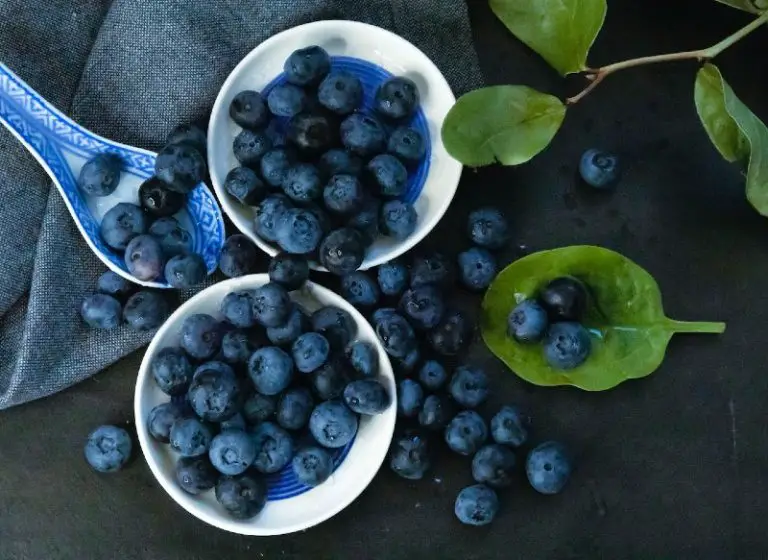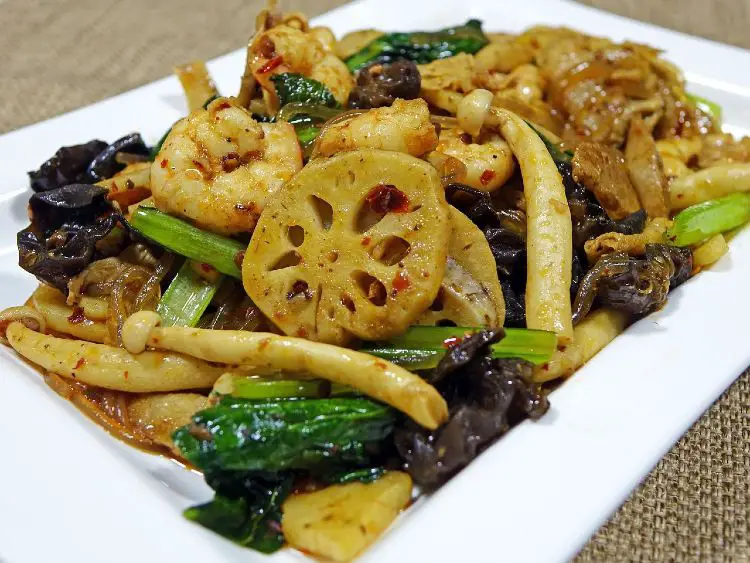Biancomangiare: The Art of Renaissance Comfort Food
Twelve months ago, I posted a recipe from Artusi’s cookbook for a Sicilian almond pudding called “biancomangiare”, which literally means “eating white”. The 120 year old recipe is a classic, but its origins go back centuries further, when the pure white dish of biancomangiare was a monastery staple and bedside comfort food based on chicken and almonds.
I wrote about the Renaissance version of this recipe recently for The Canberra Times, to coincide with the opening of the very first exhibition of Renaissance paintings in the National Gallery of the Australian capital city.
One of the paintings in the exhibition by Venetian painter Carpaccio (who has a delicious classic dish named after him) depicts a detail that caught my eye. In this sacred scene of The Birth of Mary we catch a glimpse of domestic life inside a typical Venetian palace. While wet nurses tend to the newborn Mary, a woman approaches new mother Anne with a traditional first meal in a majolica bowl: the porridge-like dish of biancomangiare.
It was the traditional restorative meal for women in childbirth. It is an elegant and delicate dish made with finely shredded or pounded poached chicken breasts cooked until creamy with almond milk, white bread and sugar, garnished with rosewater or spices. The dish became immensely popular in the Renaissance and appeared on every noble banquet menu. It was served as the first course at the extravagant celebrations of Lorenzo the Magnificent’s sister’s marriage into the Rucellai famil. But it also retained its original purpose, which was to calm, soothe and nourish, thanks to the ingredients of chicken and sugar, which were both considered medicinal. It was Renaissance comfort food, just like chicken soup today.
It is a dish that was carefully and skilfully prepared, where colour and texture were as important as painting the Virgin Mary’s cheek. It has a beautifully creamy texture, made with techniques that ensure it remains perfectly white in colour. The flavour is delicate but perfectly balanced. It is a wonderful example of how the culinary arts went through a Renaissance as much as the rest of the arts, taking a giant leap from the Middle Ages. Cooking techniques were improved, becoming more sophisticated, while aesthetics and presentation of food became increasingly important.
Italian Renaissance food, like much of what was going on in other aspects of daily life, encompassed every sensory experience possible. Dishes consisted of many tastes all at once – sweet, salty, sour, bitter and spicy. Rosewater or sugar and cinnamon were commonly sprinkled on savoury food such as roast meats just before serving.
One of the most important sources of Renaissance recipes is the cookbook of Platina. A true Renaissance figure, this charming and witty humanist was part of the court of the Gongazas in Mantua, where he met and befriended the talented cook, Maestro Martino. The pair collaborated on a cookbook of Martino’s recipes, which were carefully translated into classical Latin by Platina and printed in 1470 under the title De honesta voluptate et valetudine. It was an instant best seller, marking a turning point in the Renaissance of the culinary arts.
Platina’s Biancomangiare
There are as many recipes for biancomangiare as there were Renaissance cooks and Medieval monasteries. This is one that works very well for modern households. Don’t be put off by the idea of the sweet garnish – I urge you to try it, you’ll see why it was considered such a special, sophisticated and comforting dish.
Ingredients to serve 4 people
300 g peeled whole almonds
1 litre of water
2 chicken breasts
4 slices of white bread, crusts removed to obtain 80 grams of soft bread
2 tsp cinnamon
2 tsp white sugar
Method
Poach the chicken breasts in boiling water. When cooked, remove the chicken and allow to cool, reserving the poaching liquid for later. Shred the cooled poached chicken by hand to make very fine “threads”. If you’re strapped for time, mincing it finely or blending together with some of the liquid can also be done, but you will end up with a smoother dish, without the careful texture of the threads.
Pound the whole almonds in a mortar (this takes quite a bit of muscle but it’s the way it would have been done in the Renaissance!) or use a food processor to reduce to crumbs, adding about half of the poaching liquid a little at a time to make almond milk. Strain the almond mixture in a cheesecloth or fine strainer to remove the nuts. Transfer the almond milk to a saucepan.
Add the bread and chicken to the almond milk and cook slowly on low heat for about 10 minutes, adding enough of the poaching liquid to cover the chicken. Stir until the mixture thickens slightly to a porridge-like consistency.
Serve warm, garnished with sugar and cinnamon, as a first course.
Further information
Emiko Davies: www.emikodavies.com
Follow Emiko on Twitter: @emikodavies


